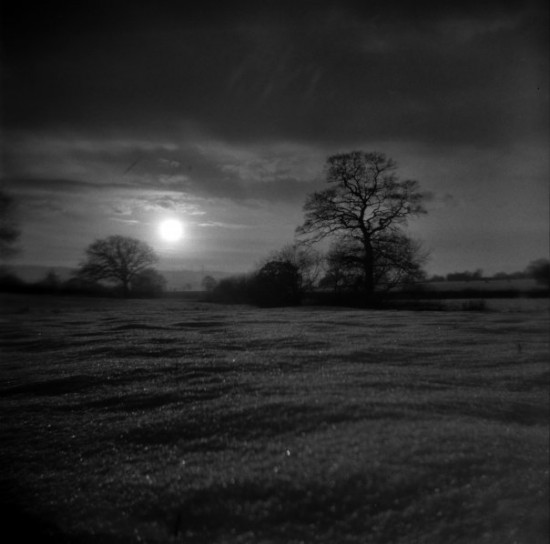
words and photo by Rob St. John.
For me, the doldrums before winter’s unfurling into spring are optimistically infused with plots and plans for warmer climes. Inevitably, in imagining future idylls my thoughts turn happily to the landscapes of home. I attach an especially strong sense of place and memory to a stretch of the River Hodder in Lancashire. In particular, a short pool which deepens out of the rocky question mark curve below Cromwell’s Bridge, over which Oliver Cromwell led his parliamentary army on the way to fight the King’s men at the Battle of Preston. However – perhaps unusually – my potent attachment to this place is anchored in the pitch darkness, in heady early summer, casting a fly for an elusive traveller – the sea trout.
To know a river’s character in the dark is to remember every pot, pool and gravel bank, every overhang, snag and crease – each riverbed furrow felt tentatively by familiar feet. By day, the pool is relatively unremarkable, a flat crystalline glide overhung by mature oaks and beech, underlain by a gently sloping bank of coarse sand and gravel. Visible from the road and bordered by a busy path, it is neither an especially remote nor wild spot. However, from the time the gloam gathers on the pool, and the light disintegrates gradually into sepia – and then night – an imperceptible change occurs in the landscape.
In The Wild Places, Robert Macfarlane describes the “new topology” inferred upon a landscape by darkness: our senses trip and test to map and memorise a topography reduced to monochrome. On the Hodder I think of otters marauding loudly through the shallows, contesting bankside territory. The deep, sweet notes of wild garlic swathing the river’s edge. The flit and flicker of bats above the water’s surface. A barnowl as a milk-white apparition, barely visible in the looming far-bank woods. My Dad slowly pacing the same beat, yards upstream.
And every now and then – just occasionally – the reassuring, inviting, anonymous splash of a leaping fish. Ted Hughes describes this heady, sticky atmosphere in the “Night Arrival of Sea Trout” <
The sea trout is genetically identical to the deeply tanned and comparatively domestic brown trout – Salmo trutta – beloved of British anglers. However, during its early development, the juvenile sea trout travels downriver towards the sea. Here it stays in brackish esturine waters, fattening on fish, shrimp and prawns for a number of years, before migrating back to spawn in the river headwaters. This migration is defined by a host of factors – the wax and wane of the tides and the river’s height and colour. As such, casting around on a well-known stretch of river is one thing – hoping for a run of elusive sea trout to be present is quite another.
In the darkness, a deer-hair muddler minnow pulled smoothly across the rivertop in a (very literal) game of cat and (field?) mouse induces a fractious crash on the plate-glass surface as a sea trout is fooled. Few of the fish that rise to the lure will be hooked; even fewer will be landed. But that’s hardly the point of it all. Instead, the search for a fickle, transient fish in the thick summer night infuses an everyday landscape with as subtle, yet significant a change as that which drives the sea trout’s mysterious marine migration. The transition into night parallels this migration. A homely, earthy and well-trammelled landscape becomes shadowy and flashed with silver: unpredictable, charged and known only to a lucky few under darkness.
So, here’s to day (should that be night?) dreaming, and to the first sea trout run of the summer!